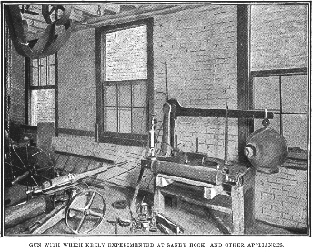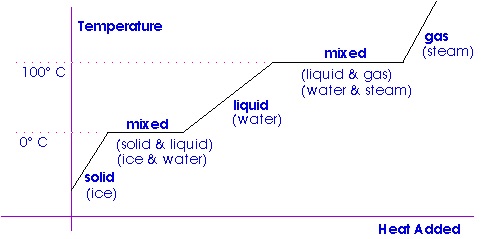NYT - PHILADELPHIA, Penn., May 22, 1886.- In the presence of 25 capitalists and scientists Keely, the inventor, gave an exhibition of his motor this afternoon. The little workshop at No. 1422 North Twentieth-street, where Keely has worked for years, was barely big enough to hold the visitors who had been invited to attend, and everybody who was invited, with one or two exceptions, was present, because it was announced in the invitations that Mr. Keely would put the machine together before their eyes, something he has never condescended to do before. Every experiment undertaken was successfully carried out, and a number of new converts to the Keely faith were made in a short time. The machines used by Mr. Keely to-day have great improvements over those he experimented with a few years ago. The test of lifting great weights, moving an engine, and firing a cannon were puzzling to the deepest scientific scholar present. Among those present were ex-Gov. Hale, of New Hampshire; James Buchannan, Superintendent of Motive Power of the New York Central Railroad; Mr. Bissell, Superintendent of the New York and New Haven Road; F. A. Haskell, of the New York Central Railroad; James Baker, William Hart, William Caldwell, Mr. Watson and Edwin Lord, New York bankers; Dr. C. M. Richmond, an inventor; Dr. A. Wilford Hall, editor of the Scientific Arena and the Microcosm, both published in New York; John B. Craight, Judge L. Hill, of Chicago, and E. Cowen, a Troy lawyer; Franklin A. Comty, President of the North Pennsylvania Railroad; Dr. George Strawbridge, Samuel Welsh, Dr. D. Havesw Agnew, Judges Herret and Jordan, of the Supreme Court; Dr. R. G. Bonwill, Dr. D. F. Woods, Charles B. Collier, George B. Collier, and Charles W. Schuelermann, of the Keely Motor Company; Dr. J. W. White, Dr. E. T. Starr, and Henry Clare, of the Stockton House, Cape May.
When Mr. Keely began to put what he calls the "liberator" together, the shop was in disorder. Pieces of the "liberator" lie about in every direction. The "liberator" weight about seventy-five pounds, and is the producer of the force that, it is claimed, will furnish power to the extent of 10 tons to the square inch. It is composed of brass resonants, steel tuning forks, and two or three steel and brass dials. It is about as queer looking a piece of mechanism as could be found anywhere. The object in having the "liberator" apart was to show the spectators that there was no bidden power secreted about the machine. When, after a half hour, Mr. Keely had connected all the parts, the spectators were no wiser than when he began. Secretary Schuelermann went out and got a quarter's worth of lubricating oil, and Mr. Keely poured some of it on the piston of a big lever, then with a little copper tube he connected the liberator with the lever. With a violin bow he tested the vibrator by drawing the bow over the tuning forks. Then he let out the air in the two-pint tube under the liberator, and said he was ready to charge the little tube with vibrating power to the extent of ten tons to the square inch.
The visitors looked on in mystified silence as the inventor, with beads of perspiration on his forehead, explained that the piston of the lever was a half square inch in area, and that it took 1,600 pounds pressure on the half square inch of area to raise the bare lever. He also explained that with the liberator he used no water, but got an etheric force from the atmosphere by vibratory action, which is accomplished with the liberator, and that there was no impingement or abutment or visible exhaust from the pressure, except a slight sound. The scientists looked wise and nodded their heads as if they were thoroughly familiar with what they saw. Mr. Keely went on to explain the use of the forty brass resonants, arranged in a circle on the libertor, and with a funny looking horn, which he called a vibraphone, be tested the nodal line and ventral segments.
When the inventor has satisfied his ear that the vibrating sounds were in perfect accord he said in an offhand way that the power in the tube had been vitalized, and that by turning a cock he would show his visitors a power of 10 tons to the square inch. Three weights were put on the lever, one weighing 112 pounds, another 56 pounds, and a third 28 pounds. Counting 1,600 pounds to the square inch to raise the naked lever, there was a weight of 7,480 pounds to the square inch. The cock was turned and the power was generated in less than half a minute, which sent the lever up like a shot. Then a shell, weighing 550 pounds, was hoisted with a Japanese pulley to the lever, and it was lifted on the lever in one-eighth of a second. The lift was a computation of 18,250 pounds to the square inch. After this experiment Mr. Keely adjusted another vibrating tube to the tube underneath the liberator. The additional tube had a capacity of seven pints, it was filled with water, and then the water was taken out merely to show the spectators that there were no chambers stored with hidden power in the tube. When the two tubes were adjusted they were filled with a pressure of 20,000 pounds to the square inch and the big shell on the lever was jerked up again in a jiffy.
Every time Mr. Keely made a new test he used his violin bow on the tuning forks of the liberator, and Dr. Hall wanted to know if the bowing of the sounding fork was essential to the getting up of the power, or whether it was a humbug. "It doesn't seem relevant or essential to the working of the machine," he said to Keely. "Are you willing to have a test by scientific men to show that the tuning of the fork is necessary?"
"Oh, what would scientific men know?" asked Keely.
"Well, will you allow me to have a private test?" asked Dr. Hall.
"Yes, any time," replied the inventor.
"All right," said Dr. Hall, warming up. "I was sent here from New-York to investigate this. I believe the turning business is only for show."
"That's a very heavy criticism."
"I know it is."
"If I had thought I was to be subjected to this I wouldn't have given this exhibition," said Keely excitedly.
"The papers all call this a fraud," said Dr. Hall, "and what I have said is not an insult,"
"Yes, it is an insult," replied Keely quickly.
Charles B. Collier interrupted them by saying: "Dr. Hall, if you're not satisfied, you can leave the room."
Here Mr. Keely refused to go on with the exhibition, and Dr. Hall said: "If you make things plain I can do you a good deal of good, and help you."
"I don't want anybody to help me," said Keely; "I'm pretty near through with my enterprise and I don't want any help."
Some of the men who had come from New-York called out that they had come a good ways to see the exhibition and they wanted to see it.
"Would you prefer me to leave the place?" Dr. Hall asked Mr. Keely.
"No," was the reply;" "you've treated me badly, but I wouldn't treat you so badly as to put you out."
There was a lull for a minute, and then Keely said: "Are you all satisfied, gentlemen, at what I've done?" There were cries of "Yes, yes," clapping of hands, and the name of Keely was shouted. Mr. Keely smiled triumphantly and then announced that he would fire the cannon.
Dr. Hall kept quiet, and the inventor adjusted a long tube, one-eighth of an inch bore, to a brass cannon. He took some vulcanite and rubber wafers for packing, and then rammed a leaden bullet, one and one-half inches in diameter, into the cannon with a broom handle. An iron plate was passed outside of the back door. The cock from the given point tube was opened and the bullet went whizzing through the panel of the door and flattened itself on the iron plate. There was a report about as loud as the sound made by firing off a revolver when the bullet left the cannon. There was no recoil of the gun, and the barrel was about the same temperature as the atmosphere. Three bullets were fired in quick succession, and Mr. Keely said that there was sufficient power in the tube to shoot 500 more bullets.
Mr. Keely's new machine, which he has been working on for some time, is a 200-horse power engine. It is incased in copper and is full of brass resonants. It looks like a patent washing machine, Mr. Keely says it will be working in a machine shop on Vine-street below Sixth, inside of 60 days, and that then he will be ready to take out his patents. The machine can be put in any shop or factory, and will run machinery of 200 horse power. With one expulsion of the liberator of one-eighth of a second the machinery will run all day. Mr. Keely claims that by simply charging the tubes daily with the vibratory power the machinery in a big factory can be run without even having a liberator from which the mysterious power is originally produced. (The New York Times)
Published: May 23, 1886
Copyright © The New York Times

"The difficulty encountered by Mr. Keely in his old generator of etheric force grew out of the fact, in part, that the vaporic power produced was so humid that he could not, when he attempted to utilize it, obtain its theoretical value in work. This difficulty has been entirely overcome by dispensing with the water which he used in liberating etheric force, by his old generator; and, by this departure, he has attained a success beyond that which was anticipated by himself, when he abandoned his original line of experiment." [Etheric Force Identified as Dynaspheric Force] (underline added)
"It is a canon of science that molecular aggregation generally involves dissipation of energy. On the contrary for more than fifteen years Keely has demonstrated that all molecular aggregation is attended with an absorption of energy; relieving by vibratory power the latent force held in a few drops of water and showing thereby a pressure of from ten to fifteen tons per square inch; claiming that resultant development of any force and of all forces is only accomplished by conditions that awaken the latent energy carried during molecular aggregation." [Vibratory Physics - The Connecting Link between Mind and Matter]
"This, Keely established in the one experiment of disintegration of water, releasing from three drops the latent energy carried, during and from the time of molecular aggregation, and showing a pressure of fifteen tons to the square inch." [Vibratory Physics - The Connecting Link between Mind and Matter]


See Also
42800 - dissociating water frequency
Bomb Calorimeter
Browns Gas
Cannon
Compound Disintegrator
Dissociation
Entropy
Ether
Ether Generator
Ether Generator Producing High Pressures
Etheric Elements
Etheric Force Identified as Dynaspheric Force
Etheric Vapor
Figure 13.02b - Liberator or Ether Vivifier
Generator
HHO
Keelys Etheric Generator or Liberator
Keelys Etheric Vapor
Liberator
Original Etheric Vapor Liberator
Plasma
Pressure produced by Vibration
Syntropy
The Compressed Air LieWas Keely a Fraud
3.18 - Dispersed Etheric Substance
15.18 - Keelys Process for Liberating Ether from Water
See Also
